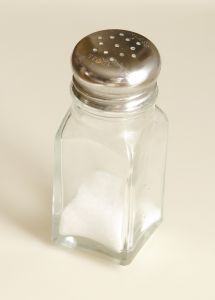 Since the announcement of the new 2025 dietary guidelines for Americans, culinary experts and dietitians have been working to help their clients adjust their diets to reflect the new guidelines. One of these suggestions includes eating less sodium.
Since the announcement of the new 2025 dietary guidelines for Americans, culinary experts and dietitians have been working to help their clients adjust their diets to reflect the new guidelines. One of these suggestions includes eating less sodium.
Registered dietitian Michelle Dudash, RD is working to help Americans do just that. Here are a few tips straight from her kitchen to help cut down your salt intake, which promotes overall heart health and may even help you slim down.
Hold the salt: Instead of adding salt throughout the preparation process, only add it at the end of cooking when it’s needed. This method requires less salt, while still reaching your taste buds upon first bite.
Think fresh: Use good quality, fresh and seasonal ingredients whenever possible, which results in maximum flavor and leaves little need for added salt.
Seek out foods with 140 milligrams or less of sodium per serving. When you can’t pick a fresh option, choose foods that qualify as low sodium. Many of your favorite packaged foods offer low-sodium varieties but if they don’t, then all fit the bill with only 90-140 milligrams of sodium per serving, making it a deliciously satisfying way to follow a diet lower in sodium.
Add garnishes. Finishing touches like julienned sundried tomatoes in egg dishes, raisins in salads, and toasted slivered almonds in rice are low sodium additions that can really liven up the flavor and texture of recipes.
Choosing lower fat. The lighter versions of your favorite nutrient-rich foods not only offers less total fat, but also may provide a savings in saturated fat and calories compared to selecting their regular counterparts. Sargento Reduced Fat Sharp Cheddar Shreds, whole grain crackers, vinaigrette dressing, and yogurt are a few examples.
Also Read:
